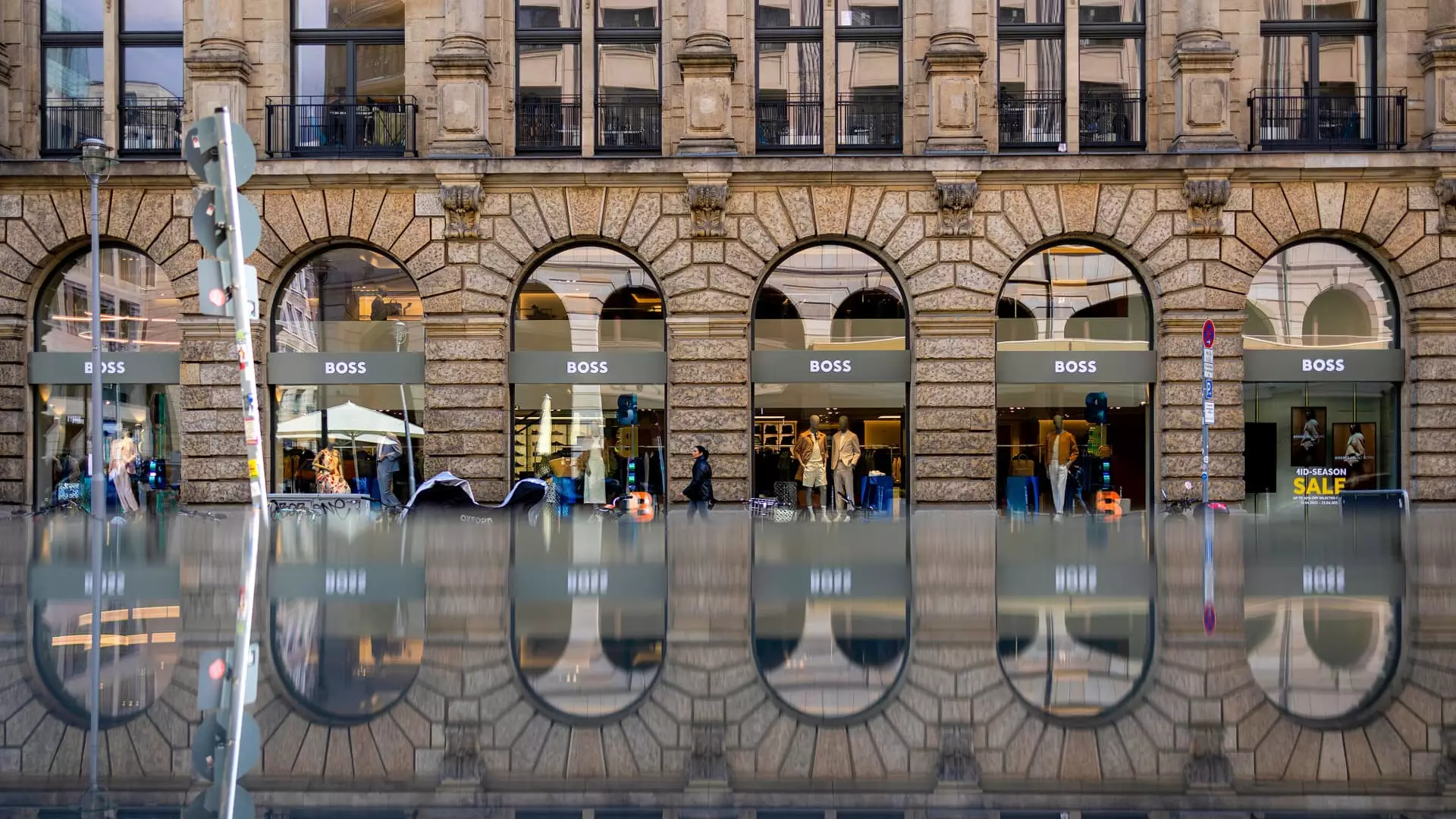Recent developments in Hugo Boss highlight an intriguing paradox in the world of high-end retail. On a day when many retailers are grappling with plummeting consumer demand, shares of Hugo Boss surged by nearly 9% after a relatively minor decline in first-quarter sales. This performance is especially noteworthy considering a backdrop of economic uncertainty and ongoing tariff tensions that have rattled the entire consumer goods sector. With revenue adjustments placing them at €999 million, polled analysts had anticipated a more severe dip, leading to a gratifying sense of relief among investors.
Asia-Pacific Blues
However, while it’s easy to celebrate surface-level gains, one must delve deeper to understand the undercurrents shaping Hugo Boss’s challenges. The company indicated that softened demand in the Asia-Pacific market, particularly in China, played a significant role in their sales decline. One can’t help but feel alarmed that a brand with such storied heritage is struggling in the world’s largest consumer market. The CEO, Daniel Grieder, framed the company’s difficulties within the broader narrative of global economic distress, stating, “We were affected by rising macroeconomic uncertainty.” This acknowledgment signals a significant challenge: have luxury brands become too reliant on a single demographic, namely affluent Chinese consumers? The notion seems troubling given that shifting consumer habits and economic pressures in China could jeopardize the brand’s future.
Maintaining Yearly Guidance: A Balancing Act
The CEO’s assurance of maintaining full-year guidance within the range of €4.2 billion to €4.4 billion leaves a mix of skepticism and hope among followers of the brand. How can one maintain optimism when warning signs loom large? There seems to be a disconnect between the reassurance offered to stakeholders and the structural challenges that the brand faces. In an age where consumers are increasingly concerned about authenticity, ecological sustainability, and relevant product offerings, Hugo Boss must address the changing tides in consumer behavior just as they cling to previous projections of stability.
Tariff Warnings and Supply Chain Regulations
Grieder’s commentary on potential price hikes amid tariff discussions is a sobering reminder of external pressures that plague the brand. The U.S. market accounts for 15% of Hugo Boss’s revenues, but the lack of domestic manufacturing exposes the company to shifts in U.S. policy that could be catastrophic. Additionally, the uncertainty surrounding tariffs makes it hard for the brand to plan its supply chain effectively. Retailers, especially in the luxury segment, thrive on predictability, and when that foundation is shaken, it creates a cascade of consequences.
The Strategic Response: Adapting for Survival
In response to the precarious situation, Hugo Boss is said to employ several strategic initiatives aimed at mitigating risks associated with market volatility. The management’s inclination to divert imports from China and leverage alternate markets should act as nimble strategies for sustaining revenue streams. However, strategic rewiring often requires a clear vision and relentless execution. Would it be enough to carve a well-defined niche in the global fashion marketplace? Unpacking that question reveals the complexity and urgency of the situation.
Focus on Diversification: The Path Forward
Yanmei Tang’s insights on Hugo Boss’s need to bolster its womenswear division resonate strongly within the overarching context of brand revitalization. If Hugo Boss truly aims to embrace a lucrative growth arc, then a more focused strategy targeting the female demographic is not just advisable; it is essential. The gap in their product strategy indicates that they are fishing in a shrinking pond while ignoring vast opportunities to lure new consumers. Investment in either acquiring an established women’s fashion brand or innovating their own lines could serve as a transformative step.
The Appeal to Younger Consumers
Interestingly, Hugo Boss has made some strides in expanding its appeal beyond traditional formal wear. This shift, as noted by analysts, suggests that the brand is trying to capture younger demographics. However, the absence of standout products in their catalog begs the question: are their efforts in staying relevant resonating with youth? Navigating this landscape requires meticulous attention to evolving trends, and failing to adapt could leave the brand with little more than nostalgic branding in a fast-moving market.
While Hugo Boss finds itself at a crossroads of sorts, the journey ahead will require strategic finesse, an acute awareness of external pressures, and an uncompromising dedication to innovation. Only time will tell whether the luxury retailer can successfully maneuver through these tumultuous waters or if it will find itself beleaguered by the forces it seeks to transcend.

Leave a Reply